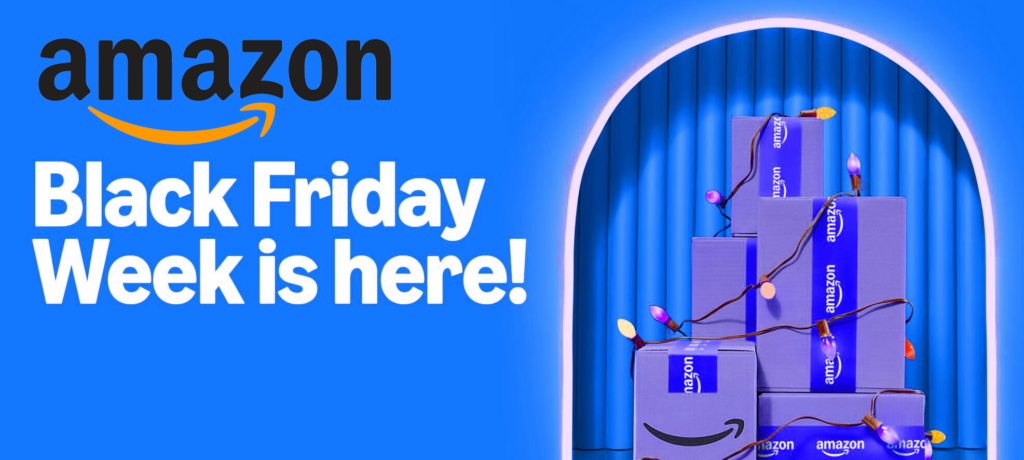Amazon’s Black Friday Blitz: A Closer Look at the Giant’s Strategies
As Black Friday 2024 kicks off, Amazon continues to solidify its position as a retail powerhouse. With a sprawling array of deals, including discounts on everything from electronics to fashion, Amazon’s strategy is clear: dominate the shopping season with unbeatable prices and lightning-fast delivery. But what does this mean for Amazon’s competitors, and how does it impact the future of retail?

The Amazon Black Friday Playbook
Amazon’s Black Friday Week is in full swing, featuring deals across over 35 categories, with daily themed drops that entice shoppers into returning each day for new bargains. Items like leather handbags, smart home gadgets, and fitness trackers are available at deep discounts, and the best part? Amazon’s massive logistical engine makes these deals accessible to nearly every customer—no Prime membership required.
Behind the scenes, Amazon’s fulfillment centers and delivery stations are working overtime to ensure that millions of orders are shipped in time for the holidays. In fact, the company’s fulfillment network has been built with one goal in mind: offering the lowest prices, a massive selection, and near-instant gratification.
Why Amazon’s Logistics Lead Sets It Apart
The key to Amazon’s Black Friday success isn’t just its deals; it’s the logistics infrastructure that powers its fast and reliable delivery. From Same-Day delivery on select products to its use of electric delivery vehicles (EVs), Amazon is a leader in combining efficiency with sustainability. As the company continues to invest in automation and AI, the customer experience continues to evolve into one of near-complete convenience. For Amazon, it’s not just about discounts—it’s about providing the ultimate online shopping experience.
But Amazon’s logistics advantage doesn’t stop at its own offerings. It’s expanding this competitive edge by offering small businesses the chance to sell through its marketplace, which amplifies its reach even further. This gives small brands a platform to compete at scale, something that other retailers struggle to match.
What’s Amazon’s Move Mean for Other Retailers?
While Amazon’s deals undoubtedly drive traffic, we at BigBoxBlog have some reservations. Amazon’s ever-expanding influence in retail puts significant pressure on competitors, especially traditional brick-and-mortar retailers like Target, Walmart, and Best Buy. These companies are scrambling to catch up, offering similar discounts and pushing their own fast-shipping services to compete. However, few can match Amazon’s network speed and efficiency.
For smaller retailers, Amazon’s dominance is both a blessing and a curse. On one hand, selling on Amazon’s platform provides access to millions of shoppers. On the other hand, smaller brands often find themselves lost in a sea of similar products, competing with Amazon’s own offerings and larger, more established sellers.
Additionally, while Amazon’s deep discounts are great for consumers, the relentless push for lower prices raises concerns over whether retail workers are adequately compensated and whether the company’s pricing strategies are sustainable in the long term.
Looking Ahead to 2025: What Other Retailers Can Learn
If retailers want to compete with Amazon during events like Black Friday, they must adapt in ways that go beyond just price cuts. Here are some critical takeaways for the industry:
- Speed and Convenience Matter More Than Ever: While price is still king, the ability to deliver quickly and reliably is a game-changer. Retailers need to consider investing in faster shipping options and more flexible delivery windows.
- Leverage the Power of Technology: Amazon’s logistical success is tied to its deep use of technology. Retailers should look at automation, AI, and machine learning to streamline operations and enhance customer experience.
- Don’t Forget the Small Brands: While Amazon’s marketplace has opened doors for smaller companies, it also means these businesses have to fight for visibility. Retailers should consider how they can support small businesses, whether through curated marketplaces or unique offerings that stand apart from the giants.
- Focus on Brand Experience: Even with fast shipping and massive inventories, customer experience is paramount. Offering personalized services, exclusive products, or a unique shopping experience can build loyalty and set competitors apart.
The Bottom Line: Can Amazon Be Beat?
As we look to the future of retail, it’s clear that Amazon’s dominance, especially during Black Friday events, isn’t going anywhere. Competitors may try to replicate some of Amazon’s innovations, but few can match the depth of its reach, its customer-first approach, and its technological prowess. However, there’s still room for savvy retailers who can carve out niches, deliver specialized experiences, and embrace a consumer-first approach to the modern shopping landscape.
For now, Amazon holds the crown. But for how long?
At BigBoxBlog.com, we’ll continue to monitor how Amazon’s strategies evolve and what it means for the rest of the retail world. As Black Friday progresses, other players in the market may need to rethink their strategies if they want to stay competitive in an increasingly Amazon-dominated retail landscape.
